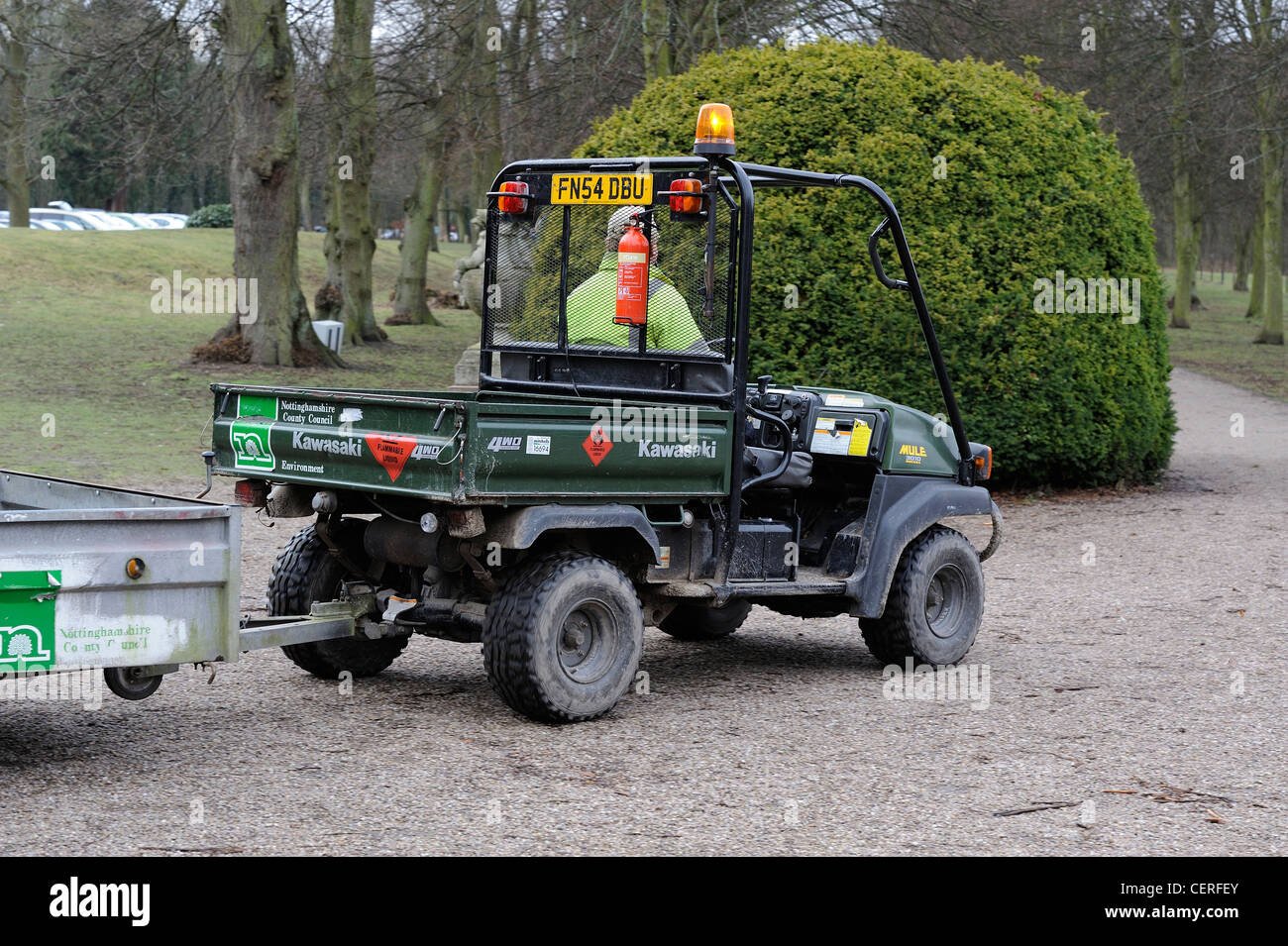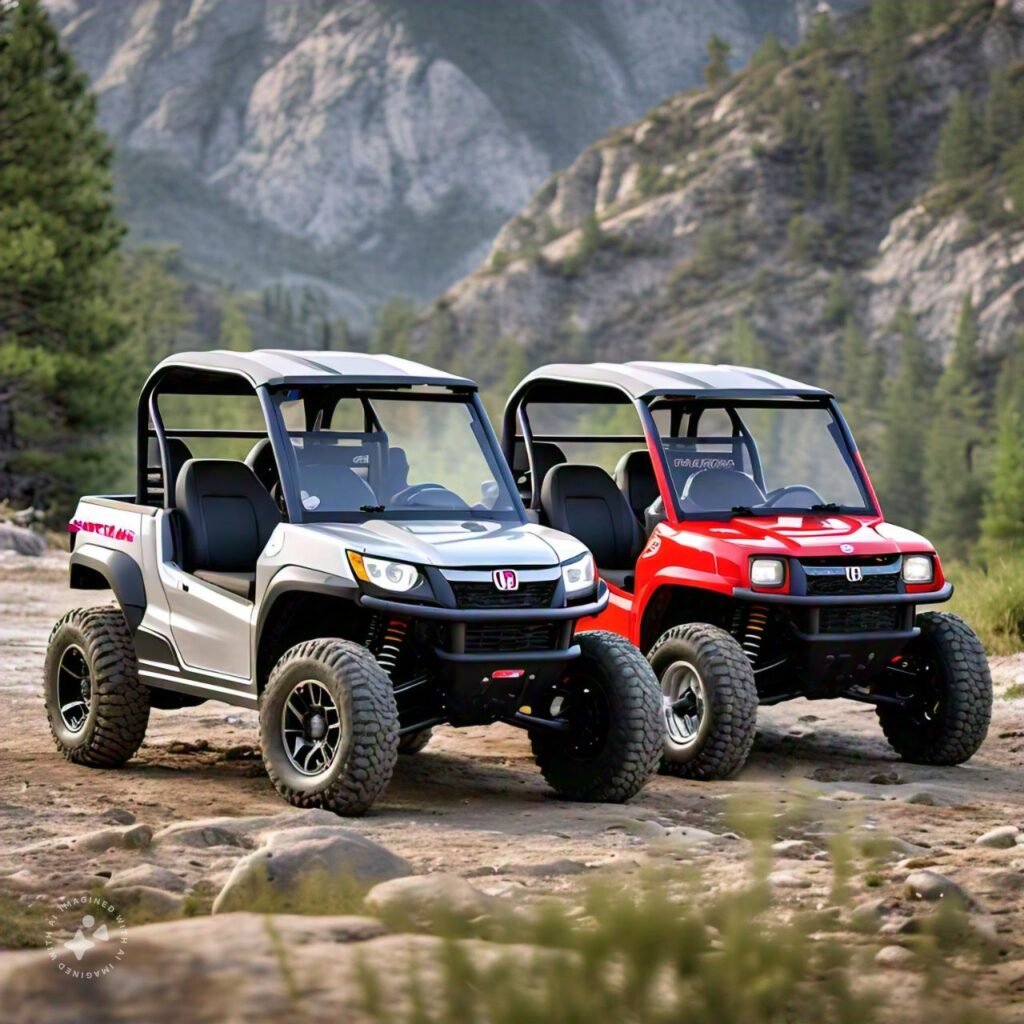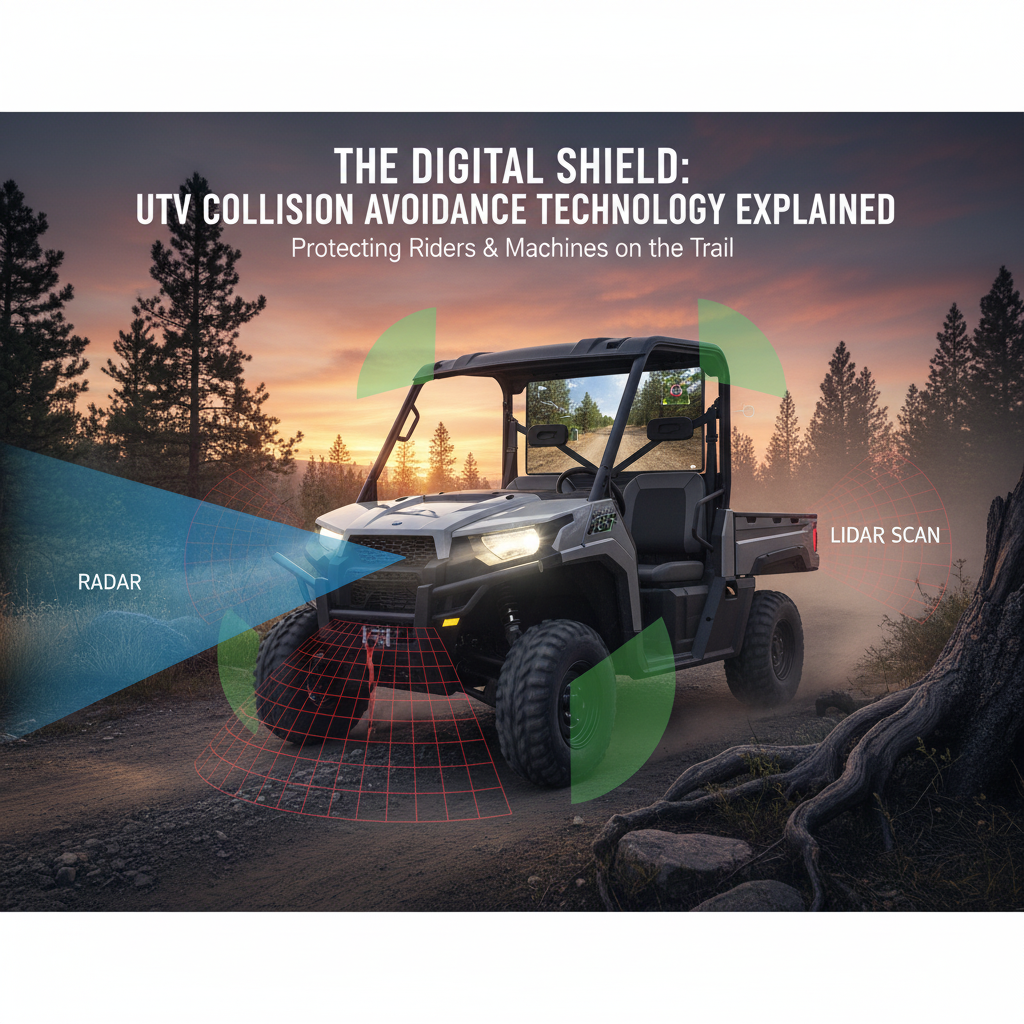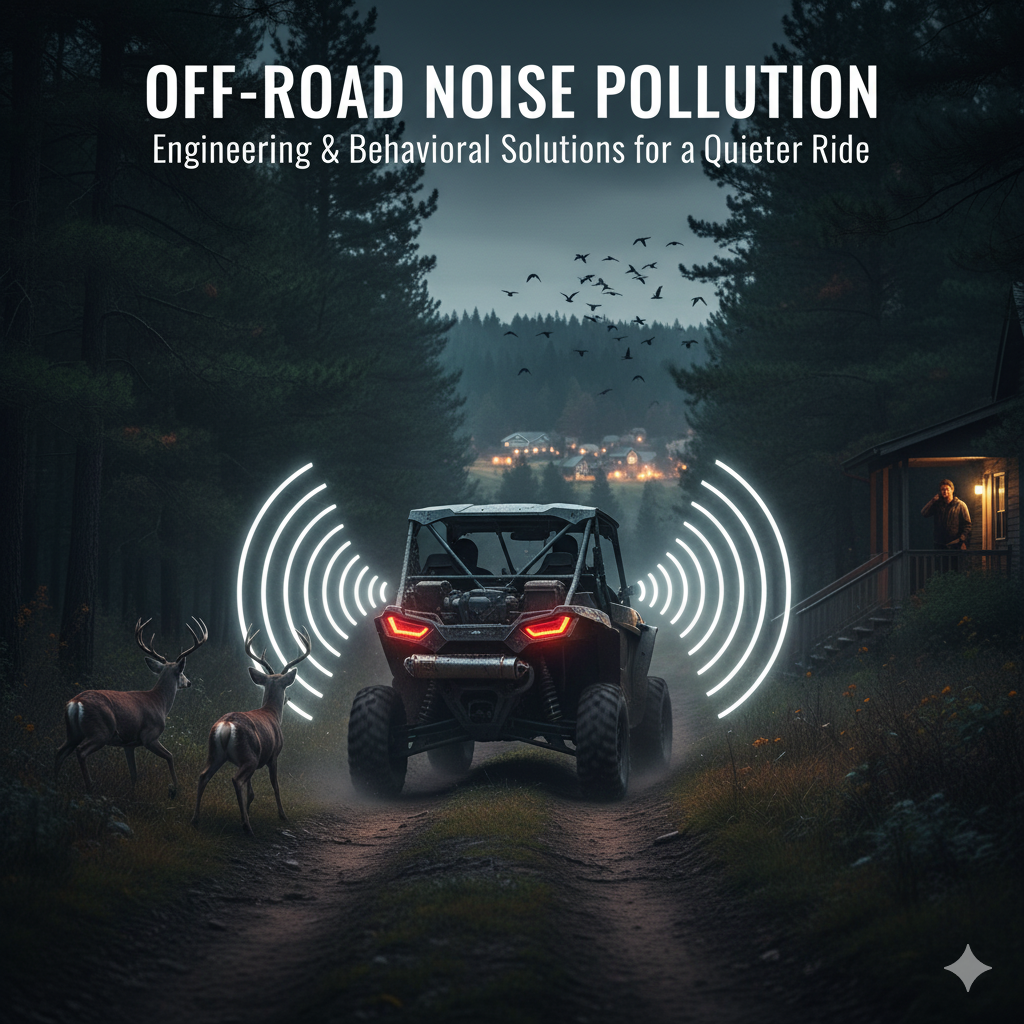- Thicker, Brighter, and More Vibrant – 1.9″ thick design, high-brightness 5050 LED chips, and a tightly wound 360° spiral…
- Multi-Functional Remote Control – Choose from 12 solid colors, 366 effects, and adjustable brightness and speed with the…
- Long-Lasting & Weatherproof – With an IP68 waterproof rating and a corrosion-resistant aluminum alloy base, which can be…
When it comes to side-by-side vehicles, the Honda Pioneer and Kawasaki Mule are two of the most popular choices among off-road enthusiasts and utility vehicle users. Honda Pioneer vs Kawasaki Mule.
Both brands have earned a reputation for reliability, performance, and versatility, making them highly sought after in the market.
This blog post aims to provide a comprehensive comparison of the Honda Pioneer and Kawasaki Mule.
Shedding light on various aspects such as performance, durability, comfort, and additional features.
The Honda Pioneer is celebrate for its robust engineering and adaptability in diverse terrains.
Whether for recreational use or heavy-duty work.
On the other hand, the Kawasaki Mule stands out with its impressive payload capacity and overall utility.
Making it a favorite among those who require a dependable workhorse.
With each model offering a unique set of features and benefits, potential buyers often find themselves at a crossroads.
Trying to determine which vehicle best meets their specific needs.
Our goal with this article is to break down the key attributes and performance metrics of the Honda Pioneer and Kawasaki Mule.
By doing so, we hope to assist prospective buyers in making a well-informed decision that aligns with their requirements and preferences.
Whether you are looking for a vehicle to navigate challenging trails, handle demanding work tasks, or simply enjoy a smooth ride, understanding the strengths and weaknesses of each model is crucial.
In the following sections, we will delve into various facets of these side-by-sides, providing detailed insights and comparisons to guide you through the decision-making process.
From engine performance to comfort features, this detailed analysis seeks to equip you with all the necessary information to choose between the Honda Pioneer and Kawasaki Mule confidently.
Overview of Honda Pioneer
The Honda Pioneer series has established itself as a prominent name in the off-road vehicle market since its introduction.
Honda, a company with a storied history in automotive and motorcycle manufacturing, ventured into the side-by-side utility vehicle segment with the Pioneer series, aiming to offer durable and versatile vehicles for both recreational and utility purposes.
Key models in the Honda Pioneer lineup include the Pioneer 500, Pioneer 700, and Pioneer 1000.
The Pioneer 500 is compact and agile, designed for tight trails and ease of transport.
The Pioneer 700 strikes a balance between size and power, making it a versatile option for various terrains.
Meanwhile, the Pioneer 1000 stands out as the flagship model, equipped with a powerful engine and advanced features to tackle the most demanding tasks and adventures.
Honda’s reputation in the off-road vehicle market is build on a foundation of reliability, performance, and innovation.
The Pioneer series exemplifies these qualities, offering robust construction, dependable engines, and user-friendly designs.
The vehicles in this series are known for their rugged durability.
which ensures they can withstand harsh conditions and heavy use.
Core features that contribute to the popularity of the Honda Pioneer series.
Include its versatile performance capabilities and adaptability to different tasks.
Whether used for recreational trail riding, farming, hunting, or industrial applications.
The Pioneer models provide consistent and reliable performance.
Additionally, Honda’s commitment to safety is evident in the Pioneer series, with features such as Roll-Over Protective Structures (ROPS), seatbelts, and secure door latches.
In summary, the Honda Pioneer series reflects Honda’s dedication to quality and innovation in the off-road vehicle market.
With its range of models catering to different needs and preferences.
the Pioneer series continues to be a favored choice among off-road enthusiasts and professionals alike.
The Kawasaki Mule series has long been a stalwart in the off-road vehicle market, known for its robust build and versatility.
The inception of the Mule dates back to the late 1980s when Kawasaki introduced the first model aimed at providing a reliable utility vehicle for both work and leisure.
Over the years, the Mule lineup has expanded significantly, encompassing a wide range of models designed to meet various needs and preferences.
Among the key models in the current Kawasaki Mule lineup are the Mule SX, Mule Pro-MX, and Mule Pro-FXT.
The Mule SX is the entry-level model, ideal for light-duty tasks and featuring a compact design that is perfect for navigating tight spaces.
A Mule Pro-MX offers a middle ground, balancing power and maneuverability, and is well-suite for both recreational and professional use.
The Mule Pro-FXT is the flagship model, boasting a powerful engine, advanced features, and the ability to seat up to six passengers.
Making it a top choice for those needing a high-capacity, high-performance utility vehicle.
Kawasaki has build a strong reputation in the off-road vehicle market.
Consistently delivering products that are durable, reliable, and capable of handling a variety of terrains and tasks.
The Mule series, in particular, is celebrate for its durability and utility-focused design.
These vehicles are engineer to withstand harsh conditions, ensuring longevity and dependable performance.
Comfort is also a significant aspect of the Mule series.
With ergonomic seating and user-friendly controls enhancing the overall driving experience.
The core features that make the Kawasaki Mule series popular include its robust construction, versatility, and focus on utility.
Whether it is for agricultural work, hunting, or recreational off-roading.
the Mule lineup offers a model to suit every need.
Making it a preferred choice among enthusiasts and professionals alike.
With continuous innovations and improvements.
Kawasaki remains a key player in the off-road vehicle industry.
Maintaining a legacy of quality and performance that the Mule series exemplifies.
Performance and Power
The Honda Pioneer and Kawasaki Mule are both renown.
their robust performance and power, making them suitable for a variety of terrains and tasks.
When comparing engine specifications.
The Honda Pioneer typically comes equip with a liquid-cooled.
Fuel-injecte engine that ranges from 475cc to 999cc, depending on the model.
This provides horsepower figures ranging from 28 HP to 72 HP.
Ensuring a versatile performance spectrum for different needs.
On the other hand, the Kawasaki Mule features a liquid-cooled, V-twin engine with displacements varying between 401cc and 812cc.
The horsepower for the Mule models ranges from 23 HP to 48 HP.
While the Mule may offer lower horsepower than the Pioneer.
It compensates with impressive torque, especially in the 812cc models.
Making it a reliable workhorse for heavy-duty tasks.
When it comes to handling diverse terrains.
both the Honda Pioneer and Kawasaki Mule excel, albeit with slight differences.
The Honda Pioneer is design with a focus on agility and maneuverability.
Making it adept at navigating tight trails and rugged landscapes.
Its advanced suspension system ensures a smooth ride, even on challenging terrains. and its acceleration is notably brisk, providing a thrilling riding experience.
The Kawasaki Mule, however, shines in its stability and ruggedness.
It is built to tackle the toughest terrains with ease.
thanks to its durable suspension and robust build.
The Mule’s lower center of gravity enhances stability, making it a preferred choice for tasks.
That require hauling and towing over uneven ground.
Although its top speed is generally lower than the Pioneer.
the Mule’s steady and consistent performance makes it ideal for work-focuse applications.
Both vehicles offer performance-enhancing features tailored to their specific strengths.
The Honda Pioneer often includes options such as a dual-clutch transmission and intelligent four-wheel-drive systems.
Enhancing its versatility and performance.
The Kawasaki Mule, meanwhile, offers selectable four-wheel drive and a locking differential.
Providing additional traction and control in demanding conditions.
In conclusion, while the Honda Pioneer offers superior speed and agility.
the Kawasaki Mule excels in torque and stability.
The choice between the two ultimately depends on the specific performance needs and riding conditions of the user.
Utility and Versatility
When evaluating the utility and versatility of the Honda Pioneer and Kawasaki Mule, several key aspects come into focus.
Including cargo capacity, towing capabilities, and the range of accessories available to enhance their functionality.
Both models are designed with work-related tasks in mind.
Making them well-suited for various applications such as farming, hunting, and construction.
The Honda Pioneer series offers a robust cargo bed with impressive load capacities.
For instance, the Pioneer 1000 can handle up to 1,000 pounds of cargo.
Making it ideal for transporting heavy equipment or supplies.
Additionally, its towing capacity reaches a notable 2,000 pounds.
Allowing it to move trailers or machinery with ease.
The Pioneer also features an innovative QuickFlip® seating design.
Which provides flexible seating arrangements to accommodate either more passengers or additional cargo space.
This versatility is particularly beneficial for tasks that require frequent transitions between carrying people and hauling materials.
On the other hand, the Kawasaki Mule series is renowned for its durability and substantial utility features.
The Mule Pro-FXT, for example, boasts a cargo bed capable of carrying up to 1,000 pounds.
Mirroring the Pioneer in this regard.
Its towing capacity is similarly competitive, with the ability to tow up to 2,000 pounds.
The Mule’s transformable Trans Cab™ system allows for easy switching between two-passenger and four-passenger configurations.
Making it adaptable to various job requirements.
This system, coupled with a sturdy steel cargo bed, enhances the vehicle’s practical utility.
Both the Honda Pioneer and Kawasaki Mule come with a wide range of accessories that further boost their utility.
For the Pioneer, available accessories include bed extenders, winches, and plow blades.
Which are particularly useful in agricultural and construction settings.
Similarly, the Mule offers accessories such as high-capacity winches, heavy-duty bumpers, and specialized hunting racks, catering to the needs of outdoor enthusiasts and professionals alike.
In summary, the Honda Pioneer and Kawasaki Mule both excel in utility and versatility.
Each offering unique design features and capabilities that cater to diverse work-related tasks.
Their substantial cargo and towing capacities.
combined with flexible seating and extensive accessory options.
Make them indispensable tools for a variety of demanding environments.
Comfort and Convenience
When evaluating the comfort and convenience features of the Honda Pioneer and Kawasaki Mule.
It is essential to consider various aspects such as seating arrangements, cabin space, and overall ergonomics.
Both vehicles are designed to offer a comfortable ride.
But there are some distinctions that may influence your choice based on personal preferences.
The Honda Pioneer offers spacious seating arrangements.
That can accommodate up to five passengers, depending on the model.
The seats are design with comfort in mind, featuring padded cushions and adjustable positions to cater to different body types and preferences.
Moreover, the cabin space in the Honda Pioneer is ample.
Ensuring that passengers have enough room to move and stretch during longer rides.
In contrast, the Kawasaki Mule provides a versatile seating arrangement.
That can also accommodate up to six passengers in certain models.
The Mule’s seats are known for their durability and ergonomic design.
Which supports the rider’s posture and reduces fatigue during extended use.

The cabin space is thoughtfully planned, allowing for easy entry and exit, which can be especially beneficial when frequently getting in and out of the vehicle.
Both the Honda Pioneer and Kawasaki Mule offer practical storage compartments within the cabin.
The Honda Pioneer features multiple storage solutions, including under-seat compartments and a sizable glove box, allowing users to store their personal items safely.
The Kawasaki Mule also provides convenient storage options, with a focus on accessibility and security.
Additional comfort features such as air conditioning, heating, and sound systems are available in higher-end models of both the Honda Pioneer and Kawasaki Mule.
These enhancements can significantly improve the overall riding experience, especially in extreme weather conditions.
The availability of these features varies by model and trim level, so it is advisable to check the specifications of each model to ensure they meet your specific comfort and convenience needs.
Safety Features
When it comes to the safety features of the Honda Pioneer and Kawasaki Mule, both manufacturers have made significant strides to ensure rider protection.
A key component in both vehicles is the inclusion of robust roll cages.
These roll cages are designed to provide a solid protective barrier in the event of a rollover, safeguarding the occupants within the cabin.
Additionally, both the Honda Pioneer and Kawasaki Mule are equipped with durable seat belts that secure passengers during operation, further enhancing safety.
Impact-resistant materials are another critical aspect of safety in these utility vehicles.
The Honda Pioneer features a high-strength steel frame that offers excellent impact resistance, minimizing damage during collisions.
Similarly, the Kawasaki Mule boasts a reinforced frame and body panels made from resilient materials, designed to absorb and dissipate impact forces effectively.
Advanced safety technologies also play a significant role in these vehicles.
The Honda Pioneer is equipped with an electronic stability control (ESC) system, which helps maintain vehicle stability by adjusting engine power and braking force to individual wheels.
This feature is particularly beneficial in slippery or uneven terrain, reducing the risk of skidding or loss of control.
The Kawasaki Mule, on the other hand, comes with a traction control system that optimizes grip by managing wheel spin, ensuring better handling and stability on various surfaces.
Braking systems are another area where these manufacturers prioritize safety.
The Honda Pioneer features a sophisticated braking system with dual disc brakes on the front and a single disc brake on the rear, providing reliable stopping power.
The Kawasaki Mule also offers a dependable braking system, with a combination of hydraulic drum brakes and disc brakes that deliver consistent and efficient braking performance.
In conclusion, both the Honda Pioneer and Kawasaki Mule showcase a strong commitment to safety through their well-engineered features.
From roll cages and seat belts to advanced technologies like electronic stability control and traction control, these vehicles are designed to protect occupants and enhance overall safety during operation.
Each manufacturer’s approach to safety reflects their dedication to producing reliable and secure utility vehicles for their customers.
Pricing and Value for Money
When comparing the Honda Pioneer and Kawasaki Mule, pricing and value for money are crucial factors for prospective buyers.
Both brands offer a range of models tailored to diverse needs, from recreational use to heavy-duty work applications.
The Honda Pioneer lineup generally starts at a slightly higher price point compared to the Kawasaki Mule.
For instance, the base model of the Honda Pioneer 500 starts around $9,499, while the entry-level Kawasaki Mule SX begins at approximately $7,799.
This initial price difference can be attributed to the varying features and performance capabilities of each model.
For those seeking more advanced features and higher performance, the Honda Pioneer 1000.
With a price tag starting at $15,899, offers a robust 999cc engine, advanced transmission options, and a range of technological enhancements.
In contrast, the Kawasaki Mule Pro-FXT, starting at $13,099, provides a competent 812cc engine and a comfortable ride with its three-cylinder design.
Despite the lower price, the Mule Pro-FXT is often praised for its reliability and durability in demanding conditions.
Evaluating value for money involves more than just the purchase price.
The Honda Pioneer is known for its superior build quality, advance features such as the i-4WD system for better traction, and a reputation for high performance.
Conversely, Kawasaki Mule’s value proposition includes exceptional durability, ease of maintenance, and a strong customer service network.
Both brands offer competitive warranties, with Honda providing a one-year warranty and Kawasaki offering a similar 12-month warranty.
Financing options are available for both brands through authorized dealers, making it easier for customers to manage their investments.
Customer service experiences also play a vital role in the perceived value.
Honda’s extensive dealer network and strong reputation for customer support ensure that buyers receive prompt service and reliable parts availability.
Kawasaki also boasts a solid customer service reputation, with many users highlighting the ease of obtaining parts and the responsiveness of the service teams.
Ultimately, the decision between the Honda Pioneer and Kawasaki Mule will depend on individual preferences, specific requirements, and the perceived value each model offers relative to its price, features, and performance.
Conclusion and Final Thoughts
In this comprehensive comparison of the Honda Pioneer and Kawasaki Mule.
We delved into various aspects that highlight the strengths and weaknesses of both side-by-sides.
The Honda Pioneer stands out with its robust engineering, versatile performance, and advanced technological features, making it an excellent choice for those who seek an all-around utility vehicle.
Its strength lies in its adaptability for both recreational and work-related tasks, thanks to its powerful engine and innovative design.
On the other hand, the Kawasaki Mule is renowned for its durability, reliability, and exceptional load-carrying capabilities.
This vehicle shines in heavy-duty work environments, offering unparalleled stability and ease of maintenance.
Its rugged construction and user-friendly features make it ideal for agricultural and industrial applications, where reliability and performance are paramount.
For recreational riding, the Honda Pioneer provides a more dynamic and engaging experience, with better handling and a smoother ride.
However, for those who prioritize heavy-duty work, the Kawasaki Mule is the preferred option due to its superior payload capacity and robust build.
For mixed-use scenarios, where users need a balance between recreation and utility, both vehicles have their merits, and the choice would depend on specific requirements and personal preferences.
Ultimately, when choosing between the Honda Pioneer and Kawasaki Mule, it is crucial to consider your specific needs and how each vehicle’s features align with those needs.
Whether it’s the versatile performance of the Pioneer or the rugged durability of the Mule, each option offers unique benefits that cater to different use cases.
By evaluating the key aspects discussed, potential buyers can make an informed decision that best suits their requirements and enhances their overall experience.










